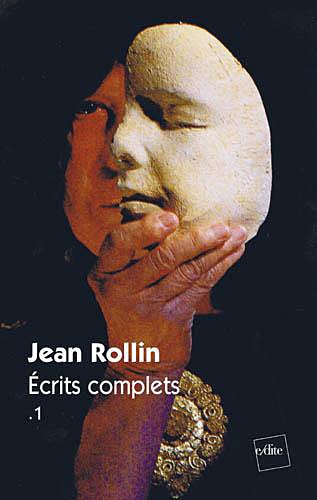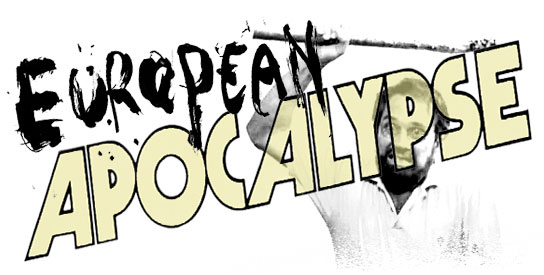 It’s been some time since I’ve reviewed a Jean Rollin film, so I thought I would tackle one I had been nervously reluctant to watch. Jean Rollin sadly passed away in 2010. The last film he was to direct, released just before his death, was Le masque de la Méduse. While Rollin is among my favourite filmmakers, I feel by the 90s his best work was behind him. I’m much of the same mind as Jason M. of the great CiNEZiLLA (this site is brilliant) who puts it perfectly: “Lost in New York (1989)] should have been the final Jean Rollin movie as it brought themes, emotions and traits to a full circle.”
It’s been some time since I’ve reviewed a Jean Rollin film, so I thought I would tackle one I had been nervously reluctant to watch. Jean Rollin sadly passed away in 2010. The last film he was to direct, released just before his death, was Le masque de la Méduse. While Rollin is among my favourite filmmakers, I feel by the 90s his best work was behind him. I’m much of the same mind as Jason M. of the great CiNEZiLLA (this site is brilliant) who puts it perfectly: “Lost in New York (1989)] should have been the final Jean Rollin movie as it brought themes, emotions and traits to a full circle.”
Lost in New York really does seem like the bookend to a career; a film that beautifully covers Rollin’s themes and stylistic leanings, paying direct tribute to his past classics while creating something new in the process. That said, I actually enjoy what I’ve seen of his post-Lost in New York output. (The only non-hardcore Rollins I’m yet to see are 2002’s La fiancée de Dracula and 2007’s La nuit des horloges.) Killing Car (1993) is great fun, and Two Orphan Vampires (1997) is not bad. But I do sometimes wish he ended on that perfect note achieved in 1989. Now having finally seen his final movie, I’m very pleased to say it has entirely washed away those feelings.
LE MASQUE DE LA MÉDUSE
France, 2010, Jean Rollin

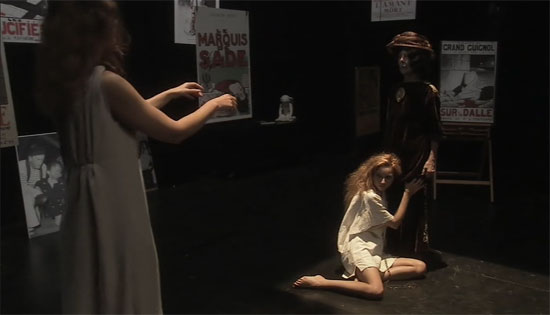
Le masque de la Méduse follows the journey of Medusa (Simone Rollin), the Gorgon. Medusa, ancient and alive in the modern world, wanders from place to place. Her memory has been wiped by her sister Euryale (Rollin regular Sabine Lenoël) after a psychic battle, which also left Euryale blind.

The film begins with a beautifully shot sequence in an aquarium. Moving among tanks of fish, Medusa watches a girl (Gabrielle Rollin, Jean Rollin’s granddaughter) playing a cello in a pit filled with giant snakes and buzzards. The girl speaks to Medusa without fear and explains to her that she plays surrounded by snakes and birds of prey because they are mute and cannot annoy her. Medusa reveals her snaked-haired form and turns the girl to stone.
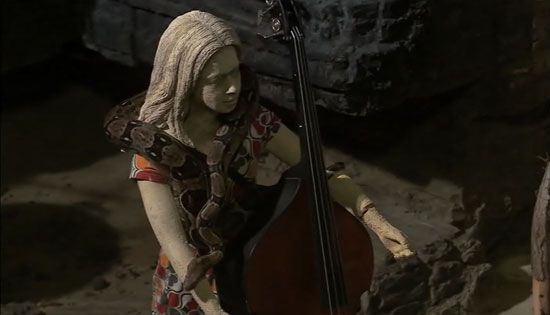
Medusa then enters the Le Théâtre du Grand-Guignol. She meets the Janitor (Jean-Pierre Bouyxou, another Rollin regular) on the theatre’s stage. They talk surrounded by old theatrical posters. It is revealed that Medusa’s sisters – the blind Euryale and youngest sister Steno (Marlène Delcambre), a gorgon who consumes crushed skulls mixed with her own blood – are living in the basement of the theatre. Euryale and Medusa once again come to blows leading to the film’s most striking and violent scene.
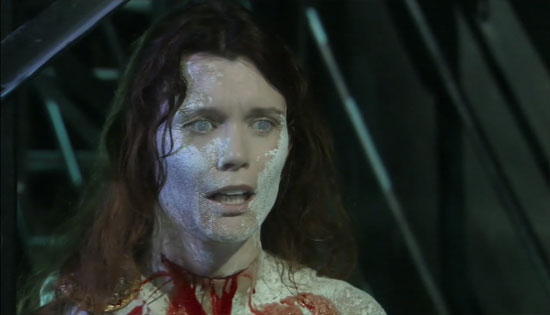
We also meet the Collector (Bernard Charnacé, and yep, yet another Rollin regular) in an odd but fascinating tangent. The Collector considers Medusa an artist, her stoney victims her artwork. He’s been collecting the bodies she has “created” and lives among them in his own personal art museum.
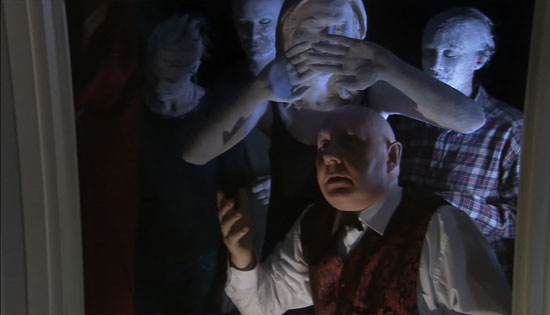
The Janitor returns to decapitate a willing Medusa who is traumatised by her own murderous and uncontrollable actions. This is followed by a sequence where Jean Rollin, in a cameo, buries Medusa’s head. The film takes a sharp turn in its second act. The focus is on Steno, Medusa’s youngest sister. She has dug up Medusa’s head and lives in the Peré-Lachaise cemetery, as seen in Rollin’s previous work, in a tomb with the bodies and spirits of her sisters. The second act concerns Steno’s meeting with a young visitor to the cemetery, Cornelius (Delphine Montoban).
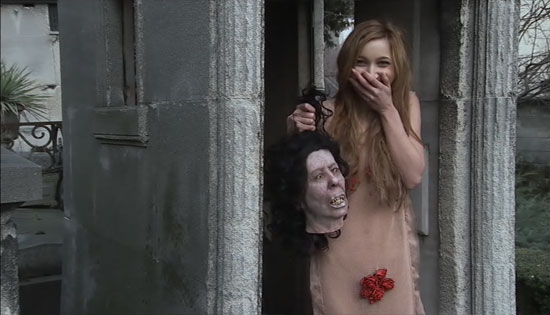
Jean Rollin’s final film is quite stunning, strange considering it was shot digitally. I did not expect Rollin’s vision to translate to HD, but, for the most part (a few shots here and there look a bit cheap – especially seen in Marlène Delcambre’s slow-motion dance number), it’s wonderful. From the hypnotic opening montage of fish in the aquarium to the tranquil cemetery scenes, Rollin manages to make the format work in his favour.
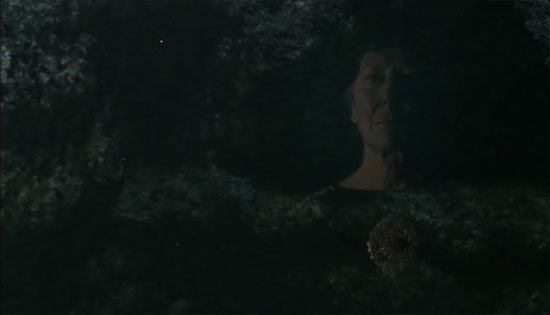
His cast is also fantastic. I absolutely loved Simone Rollin, Jean Rollin’s wife, in the role of Medusa. Her cold delivery is haunting, and she can be truly frightening, but what makes her performance standout is the sympathy she manages to instill the character. Bernard Charnacé is another standout in his small role as the Collector. He looks to be having an absolutely blast for his short time onscreen.
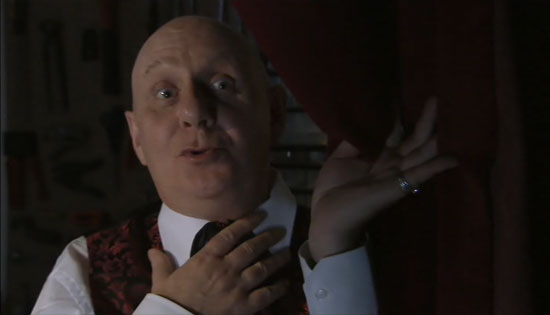
Perhaps the biggest surprise for me was the prosthetic effects. In these days of CGI-infested horror, I was rather blown away to see an impressive and practical throat-slitting effect. Medusa’s prosthetic head is also excellent, as is a hanging body seen later in the film. That’s not to say the film is brimming with effects. There’s hardly any in fact, and nor should there be.
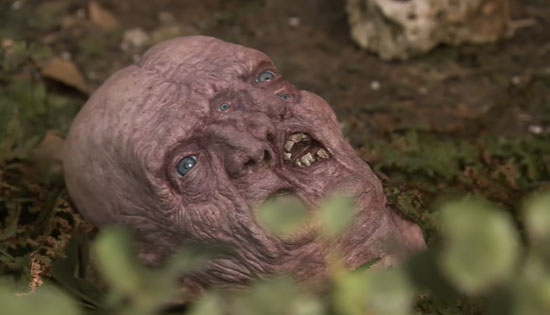
The film is not without its shortcomings. The film’s second half wraps up nicely, but takes a while to pick up steam. Thomas Smith’s performance as Steno’s boyfriend was far too silly for my liking. The excuse to get Delphine Montoban naked was also rather hilarious and took me out of the film for a moment, but it must be said that Montoban is absurdly attractive.

This is not a film that will win Rollin any new fans. In fact, those that dislike his work will most likely find this particularly dull, unwatchable even. While I think the man was a genius who made some of the most atmospherically hypnotic films ever made, I’ve seen, firsthand, his films infuriate people. But for those of us who love his work, Le masque de la Méduse should be a rather special experience. With many references, some of them very blunt, to past work, this is certainly not the Rollin film to begin with, but it is the perfect one to end with. Thanks, Jean Rollin, and R.I.P.
Availability:
Le masque de la Méduse is still yet to receive a release outside of France. The DVD was available in the first 150 copies of Rollin’s book, Jean Rollin: Écrits complets Volume 1. The first 150 copies are, of course, long gone. You can fork an enormous amount of money for a used copy, but be prepared to be faced with no English subtitles.
